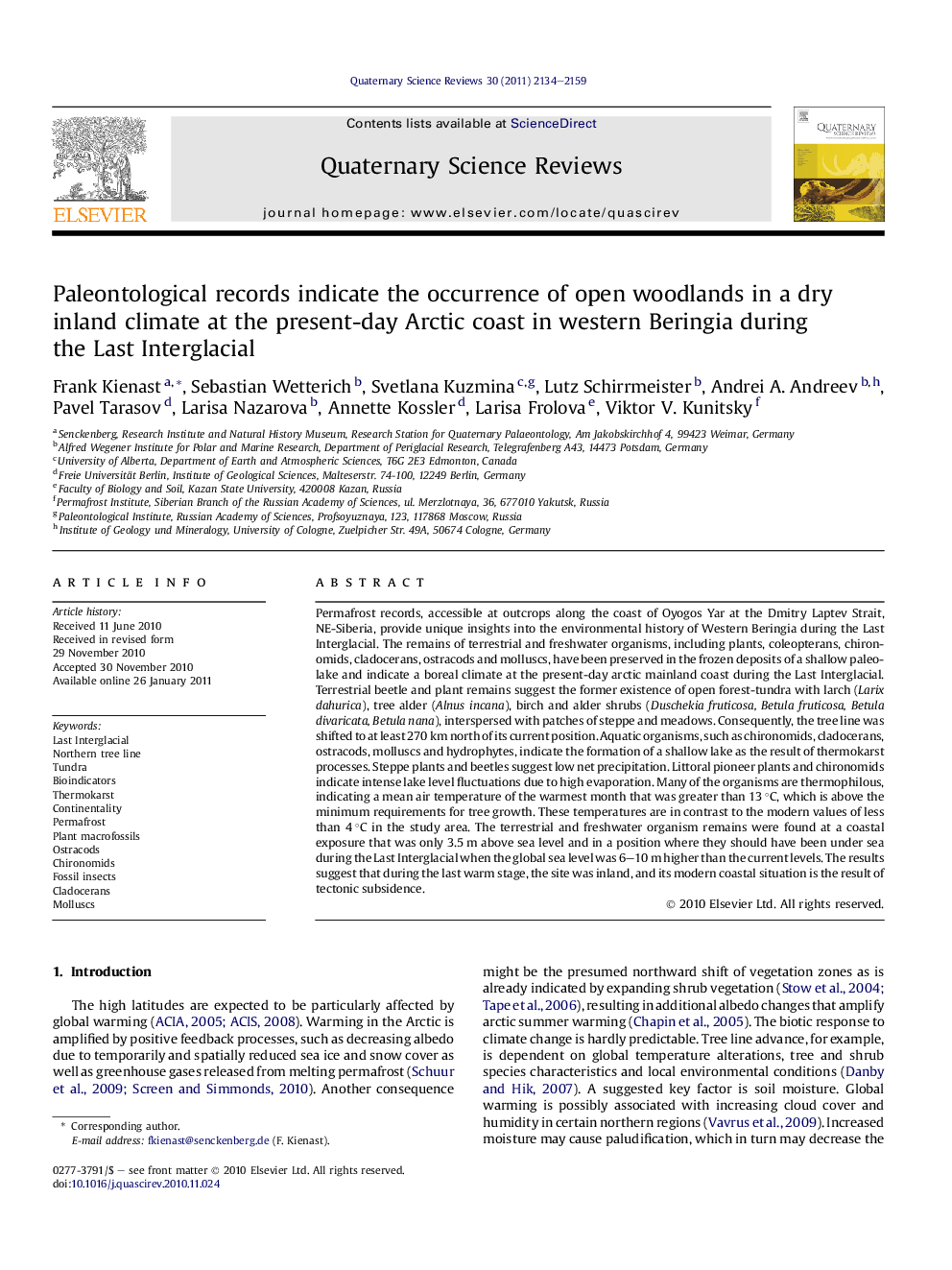| کد مقاله | کد نشریه | سال انتشار | مقاله انگلیسی | نسخه تمام متن |
|---|---|---|---|---|
| 4735865 | 1640909 | 2011 | 26 صفحه PDF | دانلود رایگان |

Permafrost records, accessible at outcrops along the coast of Oyogos Yar at the Dmitry Laptev Strait, NE-Siberia, provide unique insights into the environmental history of Western Beringia during the Last Interglacial. The remains of terrestrial and freshwater organisms, including plants, coleopterans, chironomids, cladocerans, ostracods and molluscs, have been preserved in the frozen deposits of a shallow paleo-lake and indicate a boreal climate at the present-day arctic mainland coast during the Last Interglacial. Terrestrial beetle and plant remains suggest the former existence of open forest-tundra with larch (Larix dahurica), tree alder (Alnus incana), birch and alder shrubs (Duschekia fruticosa, Betula fruticosa, Betula divaricata, Betula nana), interspersed with patches of steppe and meadows. Consequently, the tree line was shifted to at least 270 km north of its current position. Aquatic organisms, such as chironomids, cladocerans, ostracods, molluscs and hydrophytes, indicate the formation of a shallow lake as the result of thermokarst processes. Steppe plants and beetles suggest low net precipitation. Littoral pioneer plants and chironomids indicate intense lake level fluctuations due to high evaporation. Many of the organisms are thermophilous, indicating a mean air temperature of the warmest month that was greater than 13 °C, which is above the minimum requirements for tree growth. These temperatures are in contrast to the modern values of less than 4 °C in the study area. The terrestrial and freshwater organism remains were found at a coastal exposure that was only 3.5 m above sea level and in a position where they should have been under sea during the Last Interglacial when the global sea level was 6–10 m higher than the current levels. The results suggest that during the last warm stage, the site was inland, and its modern coastal situation is the result of tectonic subsidence.
Journal: Quaternary Science Reviews - Volume 30, Issues 17–18, August 2011, Pages 2134–2159